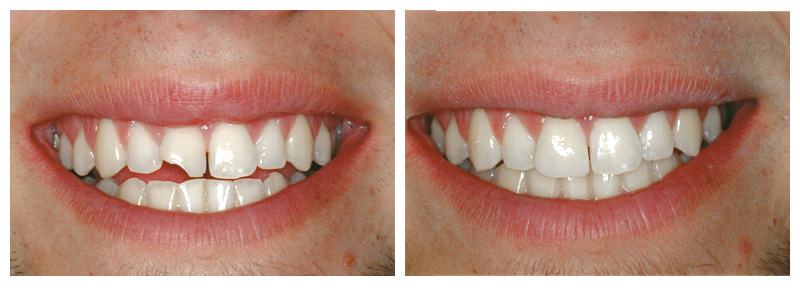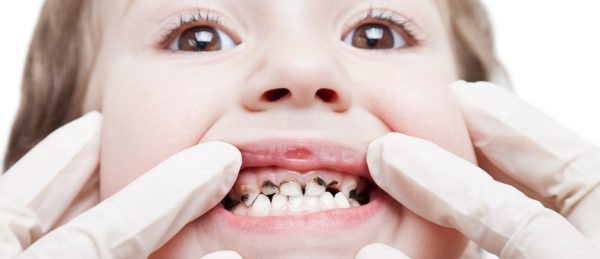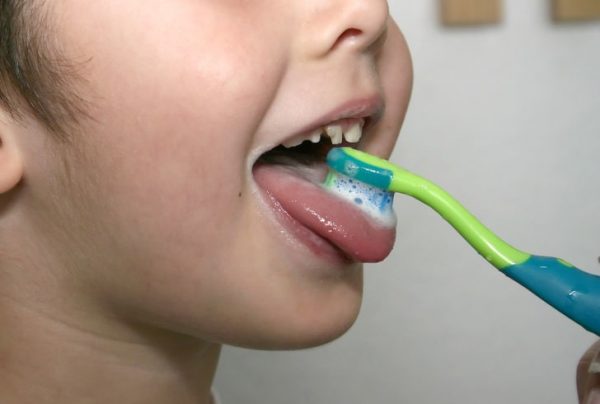What is Enamel Hypoplasia?
Enamel Hypoplasia can be a lifelong condition that patients continue to treat or a major problem that requires fillings, crowns, and even tooth extractions. To understand the cause of enamel deficiencies and how to treat and prevent them, you need to know how your enamel works and why it doesn’t always form correctly. Keep reading to learn more about Enamel Hypoplasia and how dentists treat it.

Enamel is the hard, protective covering on the outside of your teeth. It is the hardest part of your body and works like a suit of armor protecting the soft and sensitive areas. It’s because of enamel that you’re able to eat a bowl of hot soup or enjoy ice cream in the middle of summer without your teeth experiencing pain. This protective coating also fights against physical attacks on the teeth, like biting down on hard candy and ice cubes.

Unfortunately, tooth enamel is almost 90% mineral, which dissolves in acidic environments like our mouths. When we eat highly acidic foods like fruit or candy — not to mention soda — the bacteria in our mouths turn it into lactic acid, which can wear away enamel. Once your protective layer of enamel is gone, if can’t grow back, which is why so many dentists emphasize good oral hygiene from a young age to keep the suit of armor strong.
However, kids and adults don’t always end up with the right amount of enamel on their teeth, and can suffer from Enamel Hypoplasia. This article will focus primarily on its causes, effects, and treatment.

Hypoplasia is an enamel deficiency that leaves the teeth vulnerable to damage and decay. It often takes the form of grooves, pits, or lines within teeth, either across the surface or in certain spots. Depending on the severity, Enamel Hypoplasia can look like a small dent in the tooth, or take up several teeth throughout the mouth. There can be localized discoloration, or the entire tooth can turn a dark brown color. This can make the mouth incredibly sensitive, especially for toddlers that are just learning to communicate how they feel.
While Enamel Hypoplasia can occur in both baby and adult teeth, it’s often developed before the age of three. As the baby teeth are growing, the enamel is still soft and weak, creating opportunities for damage early on. Two types of causes are attributed to Enamel Hypoplasia: hereditary and environmental.
One of the most important factors in treating Enamel Hypoplasia is catching it early. It’s better for the dentist to spot a sensitive area or fill a small cavity early on than to remove the whole tooth due to extensive decay.

Veneer as one of the methods to fix enamel hypoplasia
- Published in General Dentistry, Tin tức
What is a dental filling?
What is a dental filling?
A dental filling is a way to restore a tooth damaged by decay back to its normal function and shape. When a dentist gives you a filling, he or she first removes the decayed tooth material, cleans the affected area, and then fills the cleaned out cavity with a filling material.
By closing off spaces where bacteria can enter, a filling also helps prevent further decay. Materials used for fillings include gold, porcelain, a composite resin (tooth-colored fillings), and an amalgam (an alloy of mercury, silver, copper, tin and sometimes zinc).

Dental filling for tooth decay
Which Type of Filling is Best?
No one type of filling is best for everyone. What’s right for you will be determined by the extent of the repair, whether you have allergies to certain materials, where in your mouth the filling is needed, and the cost. Considerations for different materials include:
- Gold fillings are made to order in a laboratory and then cemented into place. Gold inlays are well tolerated by gum tissues, and may last more than 20 years. For these reasons, many authorities consider gold the best filling material. However, it is often the most expensive choice and requires multiple visits.
- Amalgam (silver) fillings are resistant to wear and relatively inexpensive. However, due to their dark color, they are more noticeable than porcelain or composite restorations and are not usually used in very visible areas, such as front teeth.
- Composite (plastic) resins are matched to be the same color as your teeth and therefore used where a natural appearance is desired. The ingredients are mixed and placed directly into the cavity, where they harden. Composites may not be the ideal material for large fillings as they may chip or wear over time. They can also become stained from coffee, tea or tobacco, and do not last as long as other types of fillings generally from three to 10 years.
- Porcelain fillings are called inlays or onlays and are produced to order in a lab and then bonded to the tooth. They can be matched to the color of the tooth and resist staining. A porcelain restoration generally covers most of the tooth. Their cost is similar to gold.

If decay or a fracture has damaged a large portion of the tooth, a crown, or cap, may be recommended. Decay that has reached the nerve may be treated in two ways: through root canal therapy (in which nerve damaged nerve is removed) or through a procedure called pulp capping (which attempts to keep the nerve alive).

Laser Lightwalker technology
What Happens When You get a Filling?
If your dentist decides to fill a cavity, he or she will first remove the decay and clean the affected area. The cleaned-out cavity will then be filled with any of the variety of materials described above.
How Do I Know if I Need a Filling?
Only your dentist can detect whether you have a cavity that needs to be filled. During a checkup, your dentist will use a small mirror to examine the surfaces of each tooth.

Anything that looks abnormal will then be closely checked with special instruments. Your dentist may also X-ray your entire mouth or a section of it. The type of treatment your dentist chooses will depend on the extent of damage caused by decay.
- Published in Dental Care, Tin tức
Tooth decay prevention
Tooth decay is the destruction of tooth structure and can affect both the enamel (the outer coating of the tooth) and the dentin layer of the tooth.
Tooth decay occurs when foods containing carbohydrates (sugars and starches), such as breads, cereals, milk, soda, fruits, cakes, or candy are left on the teeth. Bacteria that live in the mouth digest these foods, turning them into acids. The bacteria, acid, food debris, and saliva combine to form plaque, which clings to the teeth. The acids in plaque dissolve the enamel surface of the teeth, creating holes in the teeth called cavities.

To prevent tooth decay:
- Brush your teeth at least twice a day with a fluoride-containing toothpaste. Preferably, brush after each meal and especially before going to bed.
- Clean between your teeth daily with dental floss or interdental cleaners, such as the Oral-B Interdental Brush, Reach Stim-U-Dent, or Sulcabrush.
- Rinse daily with a fluoride-containing mouthwash. Some rinses also have antiseptic ingredients to help kill bacteria that cause plaque.
- Eat nutritious and balanced meals and limit snacks. Avoid carbohydrates such as candy, pretzels and chips, which can remain on the tooth surface. If sticky foods are eaten, brush your teeth soon afterwards.
- Check with your dentist about use of supplemental fluoride, which strengthens your teeth.
- Ask your dentist about dental sealants (a plastic protective coating) applied to the chewing surfaces of your back teeth (molars) to protect them from decay.
- Drink fluoridated water. At least a pint of fluoridated water each day is needed to protect children from tooth decay.
- Visit your dentist regularly for professional cleanings and oral exam.

Researchers are developing new means to prevent tooth decay. One study found that a chewing gum that contains the sweetener xylitol temporarily retarded the growth of bacteria that cause tooth decay. In addition, several materials that slowly release fluoride over time, which will help prevent further decay, are being explored. These materials would be placed between teeth or in pits and fissures of teeth. Toothpastes and mouth rinses that can reverse and “heal” early cavities are also being studied.
- Published in General Dentistry, Tin tức

